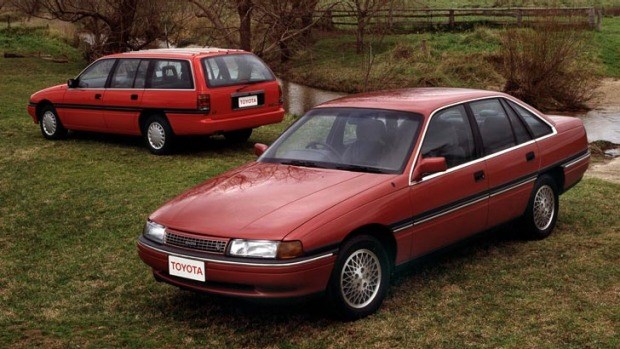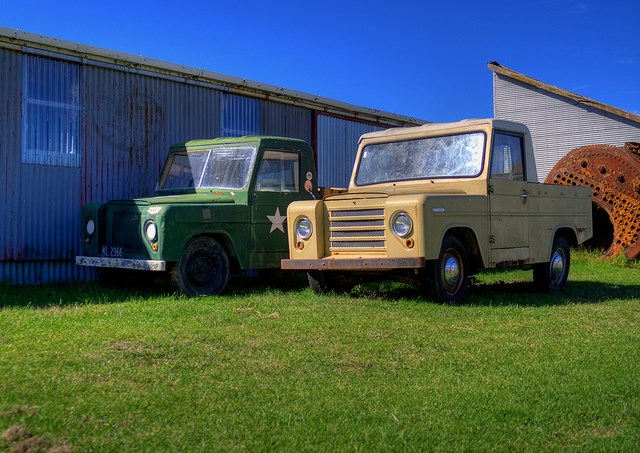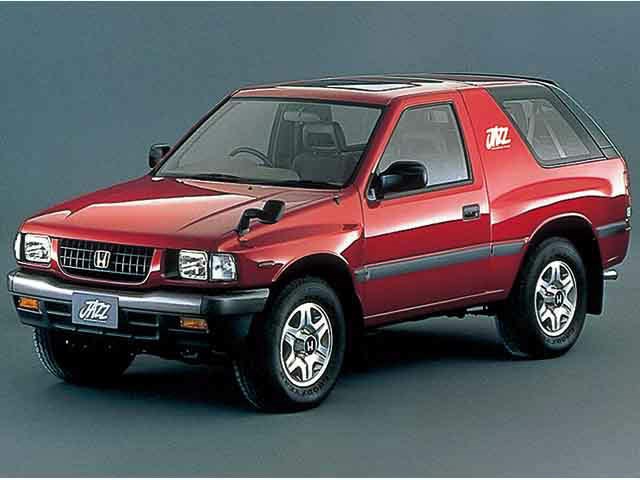Thursday Five: brought to you by the double take
We like to think of car manufacturers as being these huge devastating powerhouses, as the bully of the playground — reliant on nobody but themselves as they fist their way through the world, decimating those who stand in their way.
The reality of course is that some manufacturers are sensitive little flowers, constantly in need of Government coddling or industry pity just to ensure there’s bread on the table for little Mark and Sally at home. This inevitably leads to a bevy of different ideas on the part of the brands to save money.
One of those ideas that have been fleshed out in a variety of different ways over the years has been messing around with shared platforms. Some shared platforms cross continents, while others are shared within the same facility on cars you’d simply never expect.
So considering this, here are five cars with the weirdest sets of DNA imaginable.
Toyota Lexcen

Photo / Toyota
If you’re anything like me, you will have looked above at that image, then you would’ve blinked and wiped your eyes to make sure what you had seen was genuine. Seeing it again, you’ll have no doubt squinted into the photo to see if it had been doctored on Photoshop to look a certain way because there’s no way the Holden Commodore ever had a Toyota badge.
But, it did. For nine whole years.
Starting during the era of the VN Commodore, the Lexcen was just about identical in every way except for the fact that Toyota zapped every single element of fun. So, you couldn’t have one with a manual, or a V8. And of course nobody bought them.
You’d think that Toyota, in their worldly wisdom, would be quick thinkers and ditch a plonker like the Lexcen. But no, it stunk up the joint for nine years in what was one of the strangest ‘collaborations’ ever.
Though Toyota did just about replicate the same thinking with the Chevrolet Cavalier.
Trekka

It’s pretty adorable isn’t it, in a ‘honey I shrunk the Defender’ kind of way.
This is a Trekka, a Kiwi-built automotive concoction with a heart of gold and a body of steel. Right now is where I’m meant to say that underneath it was a Skoda Octavia Combi, but to name-drop the connection to Skoda as anything more than a marriage of convenience would be a bit of a middle finger to those who put these together all those years ago.
Still, it’s a mass-produced Kiwi creature with ties to cars from the other side of the globe. Why Skoda? Well one of the founding fathers of the concept imported them, and because such a high percentage of the Trekka’s end product was made in New Zealand, the import license for mechanical Octavia kits was very slight.
This helped the Trekka’s price, making it quite a domestic success until Japanese alternatives began to flood in in the ’70s.
Honda Jazz

Photo / Honda
Honda have been using the 'Jazz' name since 1982, but it wasn't always associated with their diminutive supermini.
After debuting on a European-market Honda City, the Jazz nameplate then moved to Honda's rebadged version of the mysterious Isuzu MU.
Isuzu have to be one of the world's more 'enterprising' car brands in respect to platform sharing, with their Trooper and Piazza both finding new homes at Holden in the ’80s and ’90s — the Trooper doing so with the dreadfully try-hard name of Jackaroo. Isuzu are also now about to form a relationship with Mazda that will see the next generation BT50 utility lean on D-Max underpinnings. Ironically, the current D-Max is based off a GM product, but that's another story for another Thursday Five.
Interestingly enough, this Isuzu excursion is the only time the Jazz label has ever seen the light of day in Japan, with the contemporary Honda Jazz as we know it in New Zealand called a Honda Fit on their shores.
Daewoo / Pontiac Le Mans
These used to be everywhere when I was a kid, and nothing in the world perplexed me more than its name.
‘Le Mans’
Did one of these win Le Mans? Did one race at Le Mans? Was the chief designer a race driver who had tamed Le Mans? Was it engineered at Le Mans?
No, none of these things. Just look at it.
The lowly and inappropriately named Le Mans appeared on this earth as a Daewoo, a Pontiac, an Opel, a Vauxhall, and a Chevrolet. Weirdly, the only two places in the world where the Le Mans wore the Pontiac name were the United States and New Zealand. Very strange to think that marketing a rebadged 10-year-old Opel in NZ as an American car with the silliest of names was rubber stamped by a real human being.
Amazingly, the Le Mans is still being made today as a Daewoo in Uzbekistan. No thanks.
This boring Chrysler thing

Photo / Chrysler
To be precise, this is the Chrysler TC 'by Maserati' — a car taking elements of American craftsmanship and draping them in pseudo-Italian design.
What a tasty combination.
But this was more than a traditional pizza lathered in Miller Lite. The TC dipped its fingers in parts from all over the world, with its engines coming from Mitsubishi in Japan and Cosworth in England.
Most curious of all though was what the TC was based on. It built upon what's known as Chrysler's 'K-Car' platform, a shared platform that Chysler utilized through the ’80s and ’90s — building a whopping 50 different cars off the same framework.
The K platform came at a time when Chrysler was circling the bottom of the toilet bowl, and needed a way out. Enter former Ford Mustang spearhead Lee Iacocca to try and steady the ship. Iacocca realised that America needed a small car (or rather, 50 different kinds of small car ... ), and so forged the idea for the K platform; where a shared platform across all of Chrysler corporation's brands could save the company wads of cash in development and production costs.
The cars, like the TC, weren't great — but they did well enough to save the Chrysler brand.




